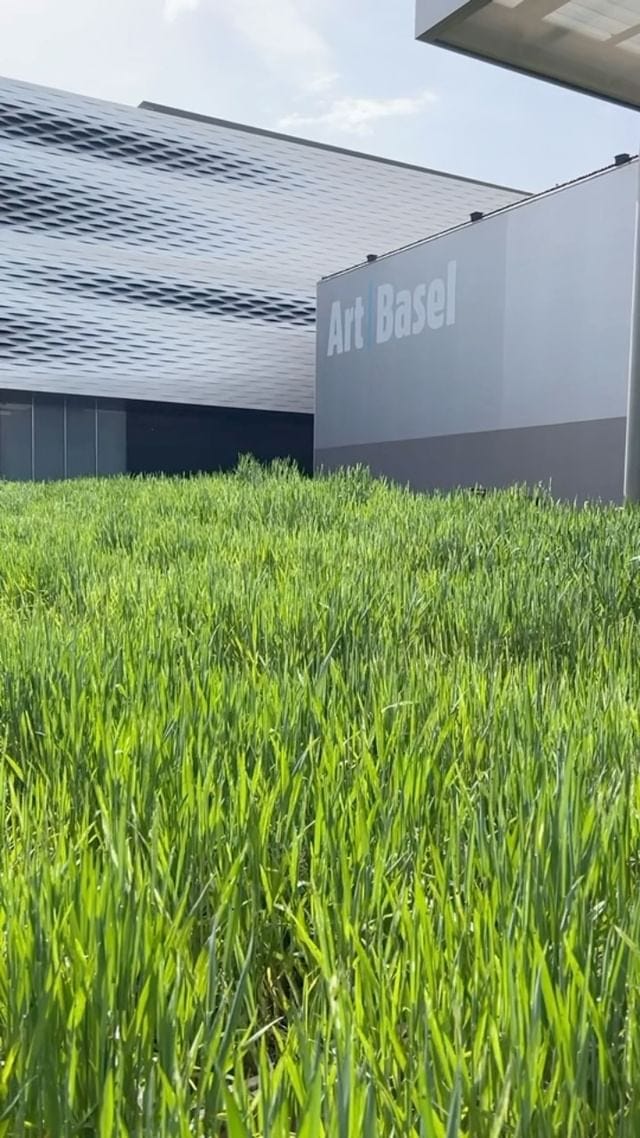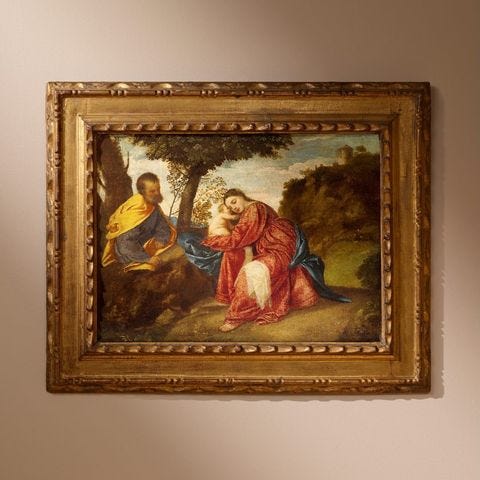Hello! I do not have much to say today about myself. So let’s get into:
An Art Basel recap
How the opera is staying relevant
and more!
Be honest: Do you really know what happens at Art Basel? It is okay if not. Because today we are going to get into it. Basically, Art Basel—which kicked off in Basel, Switzerland (the third most populated city in the country, behind Zürich and Geneva) last week—is an international art fair that brings together buyers and sellers (galleries) of fine art. It was founded in 1970 with the Swiss show, and expanded to Miami Beach in 2002, Hong Kong in 2013, and Paris fairly recently, in 2022.
This year’s show in Basel brought together more than 200 galleries and more than 4,000 artists; it ran from June 13 to 16 officially, but it opened to VIPs on June 10. By its very nature, Art Basel is the playground of the monied class, but the fair has established grounds in intellectualism. See some of its programmed talks, for instance: András Szántó, who has made a career out of advising museums and foundations on “cultural strategy” (very cool job which I would also like to have) led a conversation with artist and choreographer Ligia Lewis and museum director Sam Bardaouil on the opportunities and challenges of museums to be “interdisciplinary hubs” for ongoing dialogues, live performance, and new technology. The young Korean sculptor Mire Lee discussed her kinetic sculptures which I find interesting and somewhat unsettling (in a good way).
Basel is also the site of location-specific art. A tribute to Agnes Denes’s Wheatfield – A Confrontation—a 2-acre patch of wheat that the now-93-year-old artist planted in Lower Manhattan in 1982 as an economic and environmental protest—took over 1,000 square meters of the fair’s main plaza. Basel Social Club—another art fair not affiliated with Art Basel, which ran events and installations throughout the week—installed for-sale artwork in nearby farms and green spaces.
So, what else went down at this year’s fair? Well, as Artnet reported, the crowd was pretty European, which explains why there were such long lines for wurst at lunchtime. In spite of some economic anxiety, sales went well. David Zwirner sold Sunflowers, a colorful abstract painting by the late American artist Joan Mitchell for $20 million; it was the most expensive piece sold. The fair noted that galleries selling art by younger artists have done increasingly well, as have those selling photographs. New Delhi Vadehra Art Gallery, for instance, sold vintage prints of Sunil Gupta’s ‘Exiles’ (1986), a photo series of gay men in Delhi, to private collections for $20k each. And multi-disciplinary artist Torkwase Dyson, who is represented by Pace Gallery, sold her monumental sculpture Errantry to Brazil’s Instituto Inhotim for $380k.
Checking in on the opera world. It looks like the Met’s strategy of putting on more new operas is working…but not as much as it needs to. The opera is nearly back at pre-pandemic levels, and the average age of a single buyer has also gone down from 50 to 44. About one-third of its 2023-2024 season—which just ended—was devoted to new operas. And while the Met told the Times that this programming has brought in new audiences, it’s not driving as many ticket sales as it should. Some new shows have stood out as particularly successful; Anthony Davis’s X: The Life and Times of Malcolm X had an impressive 78% attendance, putting it behind classics The Magic Flute, Carmen, and Turandot.
Simply put, the Met is still figuring out what it has to do to once again achieve financial sustainability. Over in Europe, the Vienna State Opera is similarly thinking about how it can future-proof its strategy, but notably, it certainly does not face the same challenges as The Met does in New York: Vienna’s opera, which is a driver of tourism, receives considerable government funding and sees attendance at 99.5 to 100% capacity (something I witnessed myself as I got a standing room ticket for Le Nozze di Figaro in May). General director Bogdan Roscic, who came on to the Vienna State Opera in 2020, put together the opera’s first marketing department and saw the company through the pandemic by putting on well-“attended” streaming performances. Now, the company is preparing to open a new opera house, which will be devoted to “people who need a path into the world of opera,” and programmed with new operas and child-friendly performances.
Figaro at the Vienna State Opera reminded me of The Met’s recent Carmen: both are classic, traditional operas, but their staging, costuming, and set design made them feel current and accessible. I think the Met has done a great job with its external branding for its operas (I especially loved Anna Weyant’s art for La Forza del Destino), I do think, once again, expanded marketing—including more events designed to get Millennials and Gen Z out of their apartments and in their opera best—could help solve some of The Met’s woes. It is better, I think, to sell more discounted tickets than to have shows that consistently lag under 70% attendance. I speak from experience when I say: Give young people an incentive (a lower price, an excuse to dress up, more Fridays Under 40 dates), and they will come. Show them a good time, and they may even become regulars.
The Tony’s are tonight. I did not see all that much this year but I did see An Enemy of the People last Sunday, and it was one of my favorite performances in recent memory. I am so happy for Jeremy Strong that he not only got to method act, but he got to do so while wearing his favorite color, brown (relatable). I hope he wins.
You literally need to look at beautiful things. Neuroaesthetics—which studies the brain’s response to various forms of aesthetic experience—posits that perceptions of beauty (which can be visual, musical, etc.) have a significant impact on health, and people who engage with the arts can expand their lifespans by doing so. And that doesn’t mean you have to do it for a living. In fact, as The Financial Times’s Jemima Kelly notes, relying on one’s art for an income can actually reduce its potential neurological benefits. Time to break out the watercolors.
From bag to riches. A Renaissance painting by Tiziano Vecellio (more widely known as Titian) titled “The Rest on the Flight Into Egypt” is going up for auction at Christie’s. It is expected to sell for as much as $32 million, which is especially wild when you know the painting’s more recent history: In 2002, art detective Charles Hill found the painting in a bag at a southwest London bus stop after it was stolen from the estate of John Alexander Thynne—the “the fourth marquess of Bath, England”—in 1997. It wasn’t the first time the piece was stolen, either. In 1809, Napoleonic troops occupying Vienna looted it from Archduke Leopold Wilhelm of Austria. Good luck to the prospective new owner! ▲









